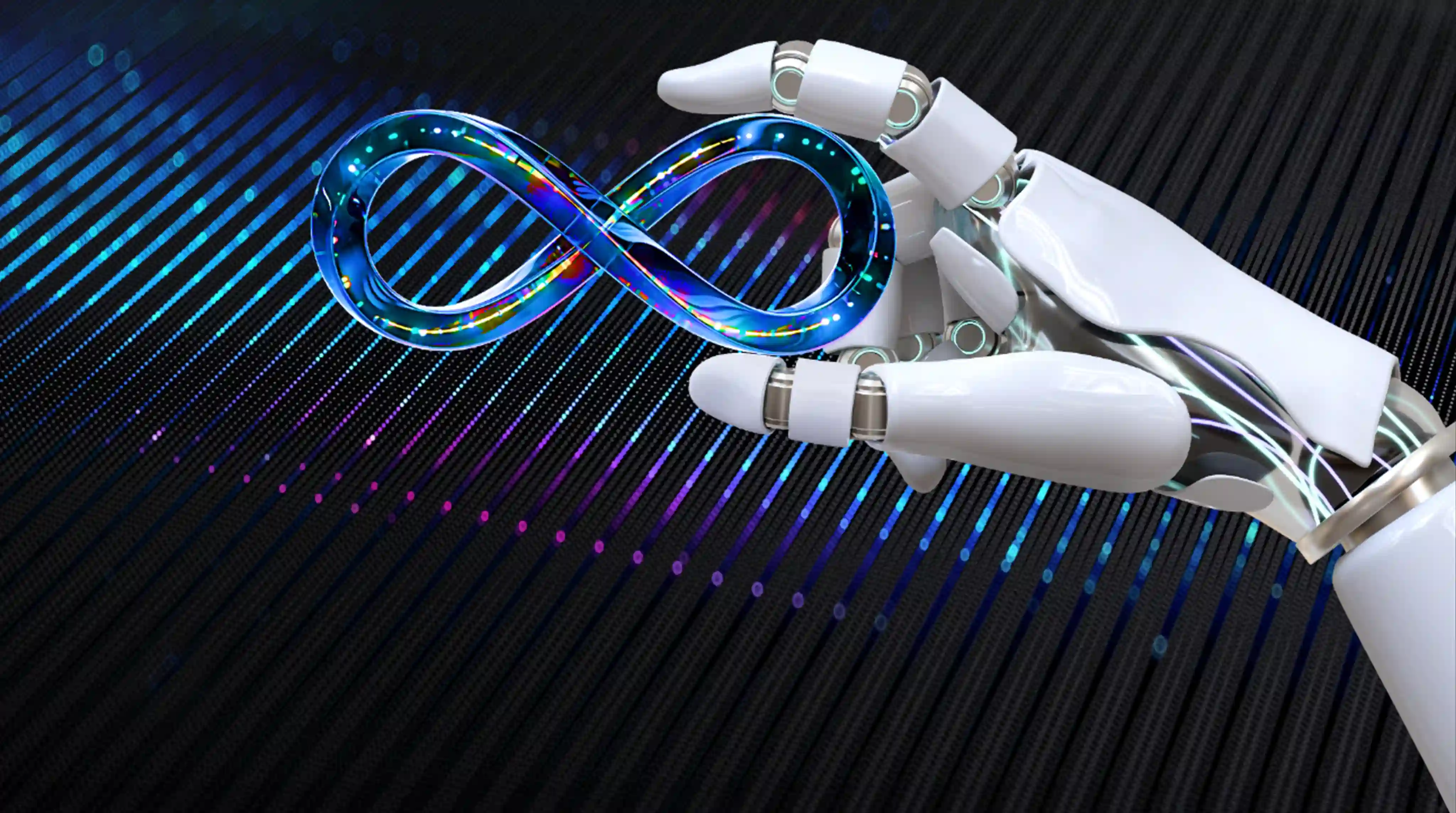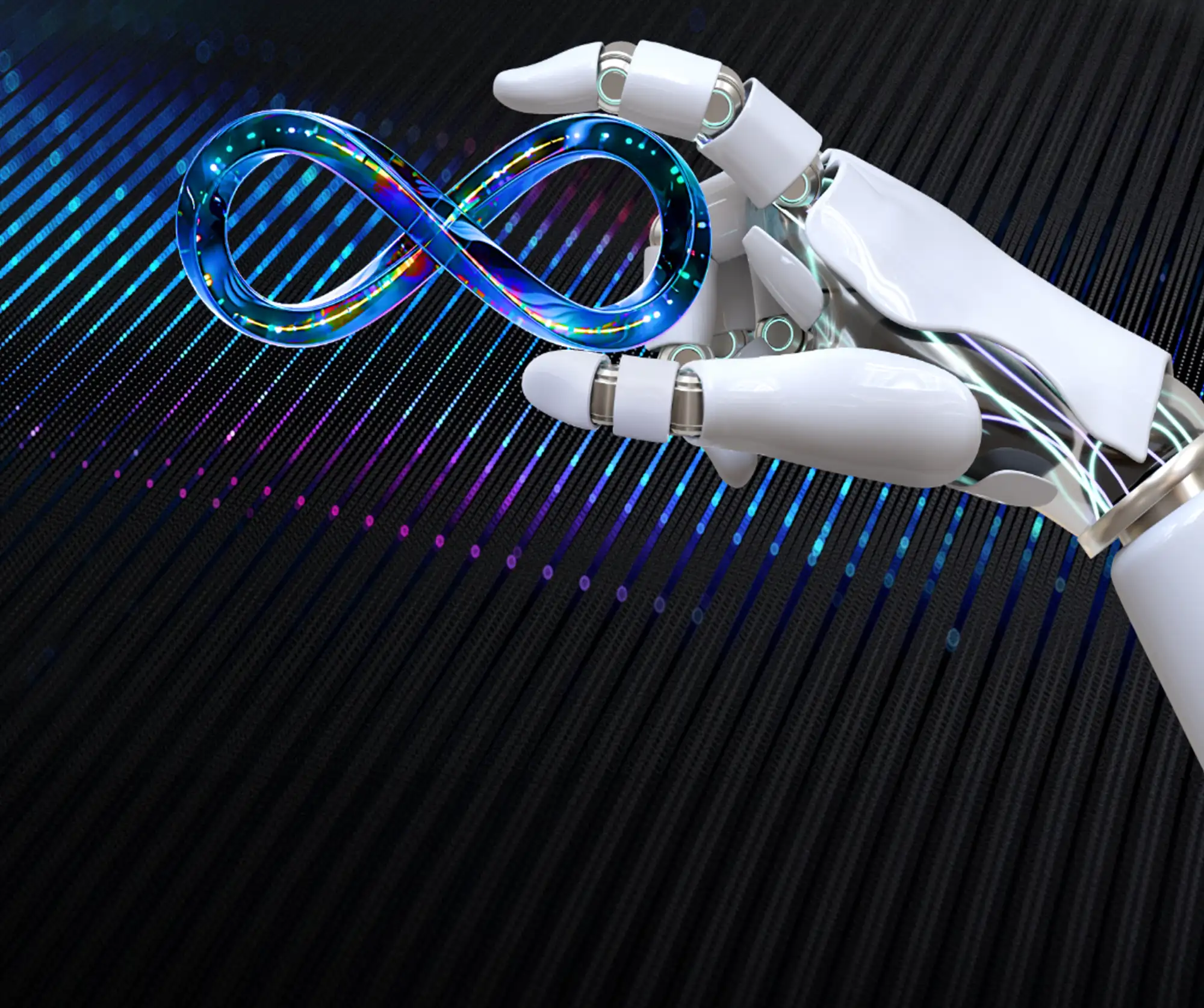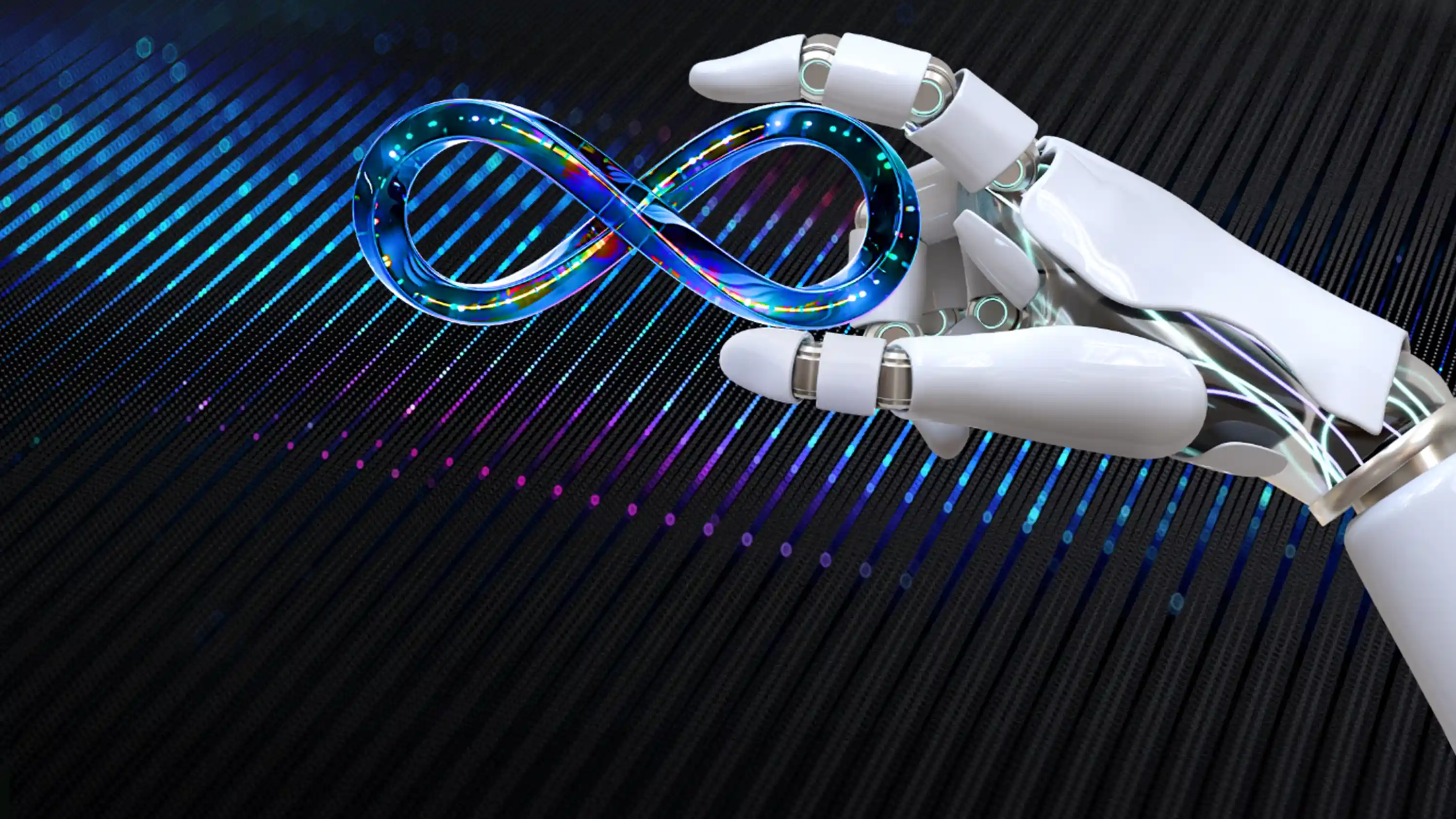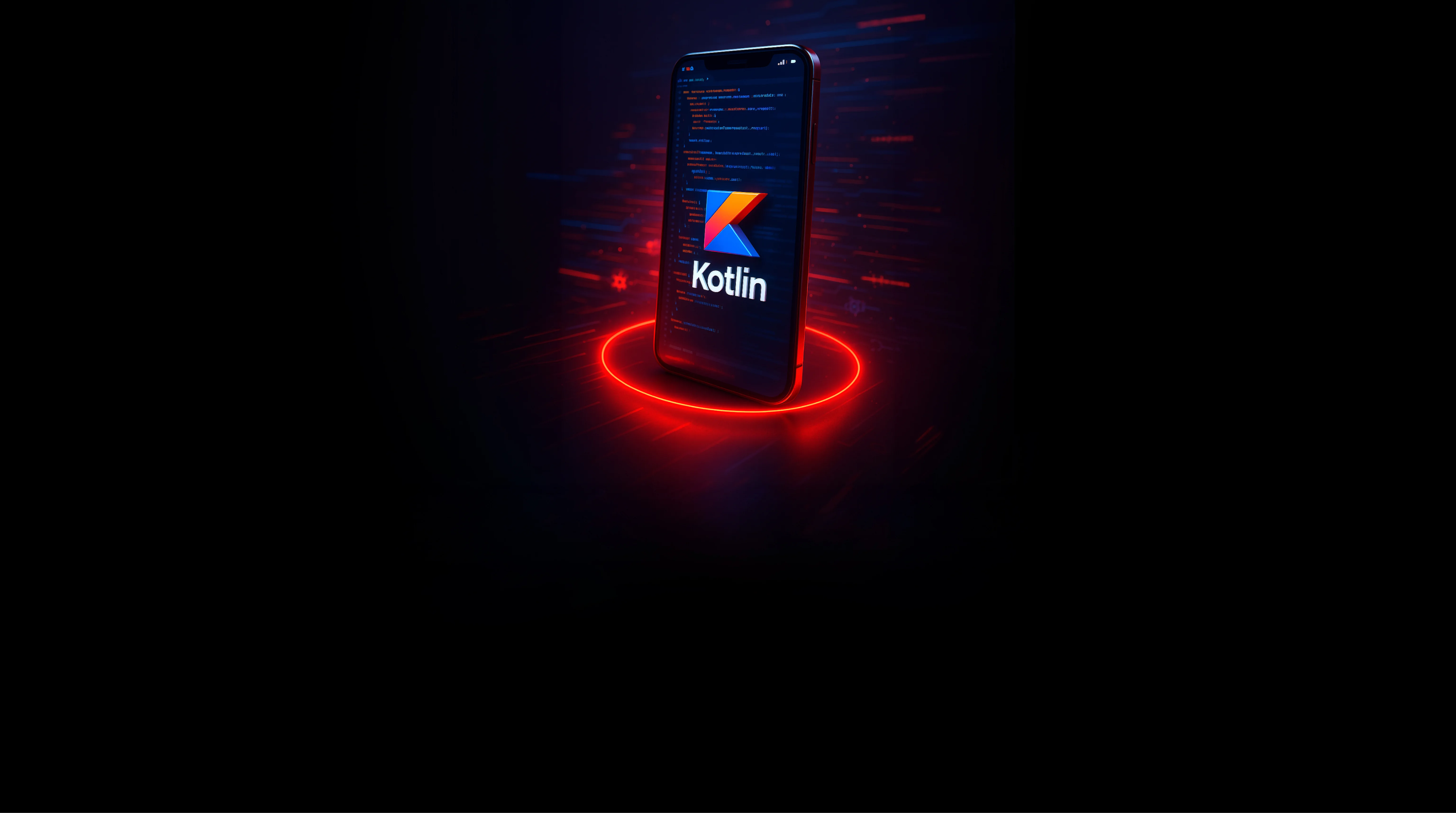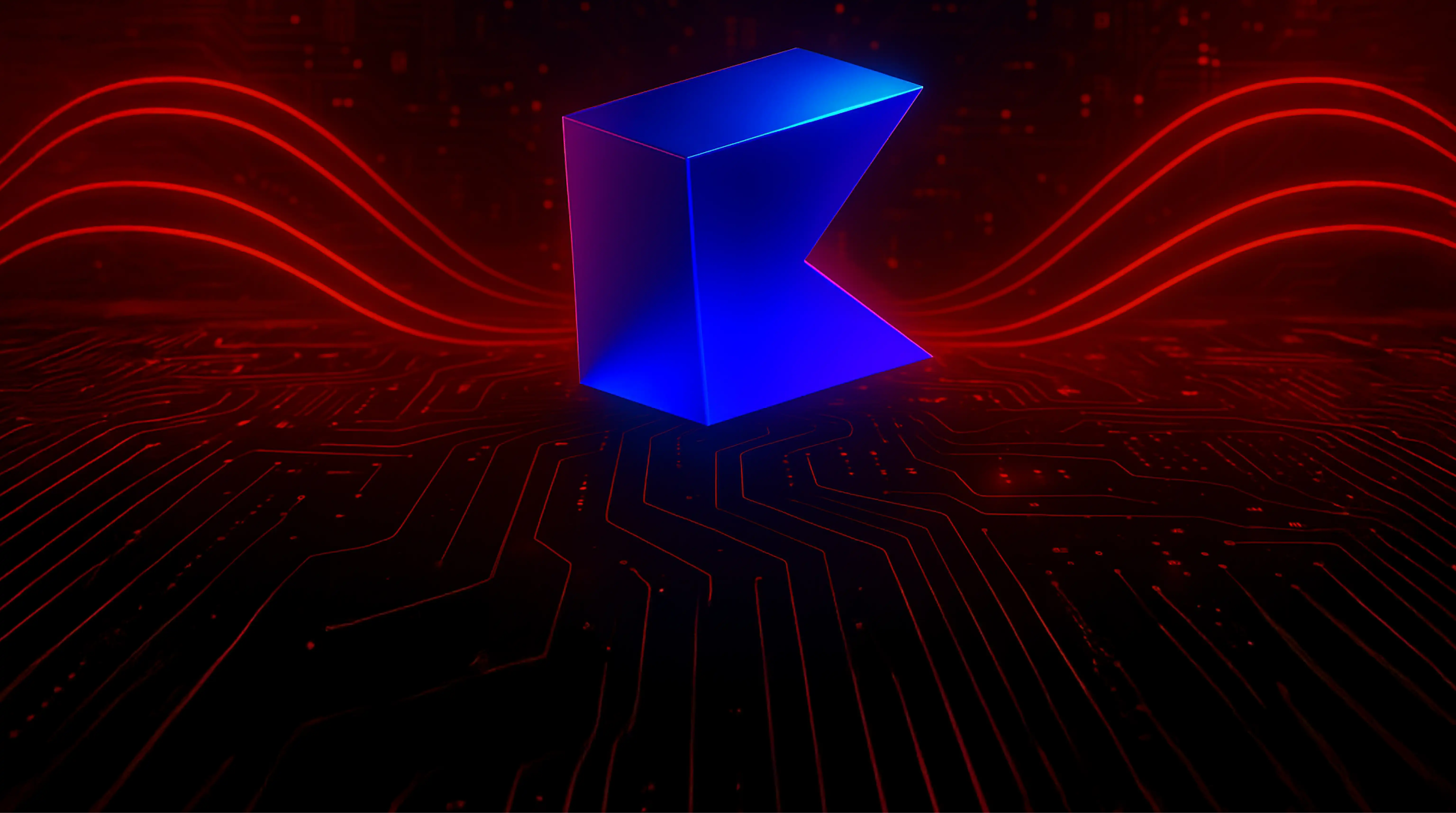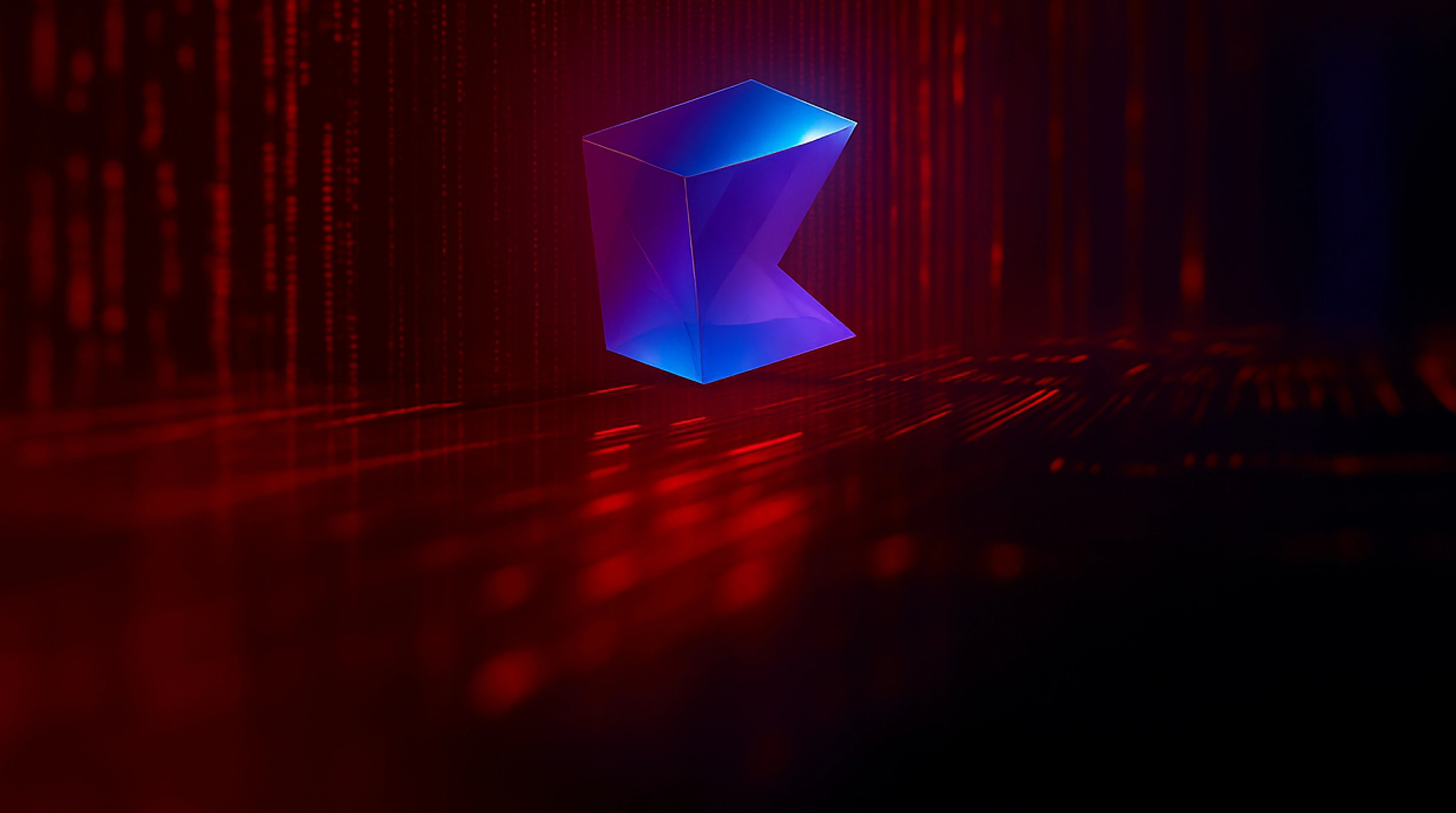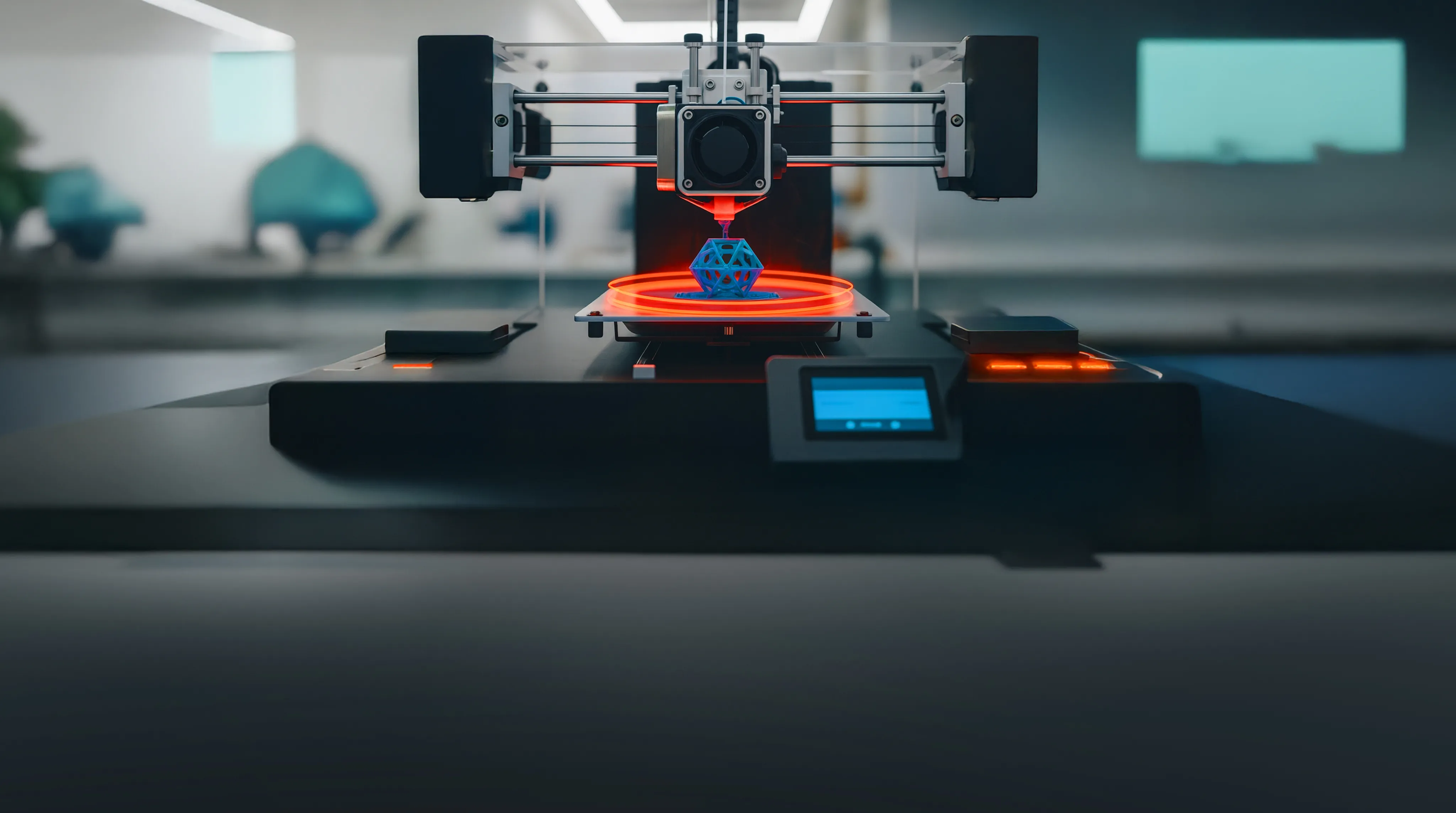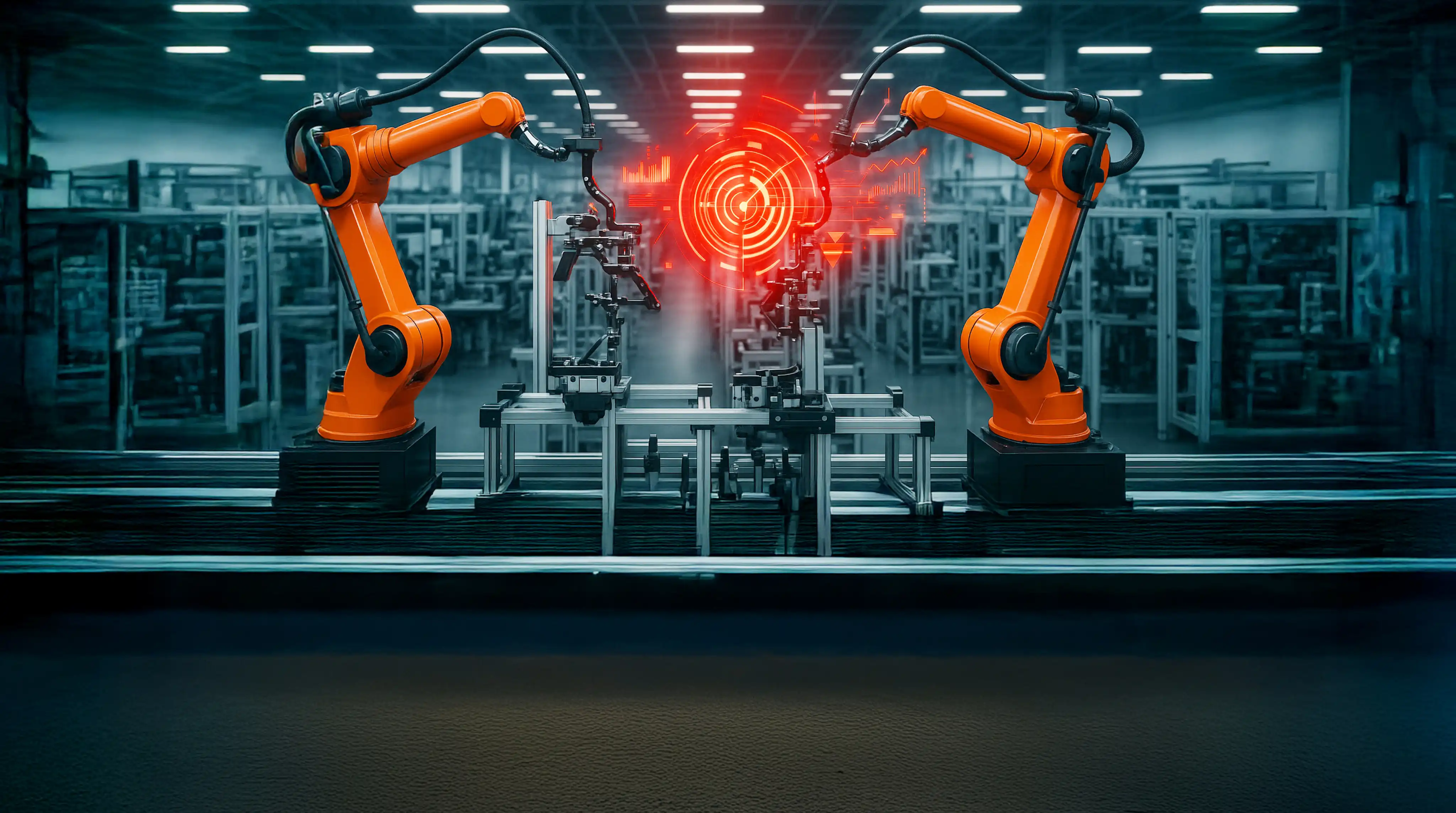Transforming Software Delivery with AI-Driven DevOps
August 12, 2024
Introduction: AI/ML and DevOps Synergy
DevOps, as the name implies, promotes collaboration among software development and operations teams. Its major purpose is to accelerate the deployment processes and improve software delivery, through workflow optimization and shorter development workflows. Important DevOps practices include:
- Continuous Integration (CI): frequent integration of code changes into a centralized repository of automated builds and tests.
- Continuous Delivery (CD): the process of automatically preparing code updates for production release.
- Infrastructure as Code (IaC): machine-readable scripts to manage infrastructure.
- Monitoring and logging: continuous tracking of systems in order to enhance performance and reliability.
Incorporating AI and ML into the DevOps team and workflow, in a practice known as AIOps, delivers considerable improvements across all elements of the software delivery process, increasing product quality and cost efficiency, and connecting the software development lifecycle with operational goals.
An AI/ML integration with DevOps professionals and processes enhances automated deployment methods, predictive analytics, continuous monitoring, intelligent resource management, and privacy and security policies, contributing to a more efficient and dependable software development and delivery process. As artificial intelligence and machine learning technologies keep advancing, their impact on a DevOps operation, and software development team will grow.
The Role of AI in DevOps Processes
Automated Code Reviews
Automating code reviews use machine learning algorithms to scan code for defects, security vulnerabilities, and operational concerns. These artificial intelligence algorithms can detect coding patterns that may lead to errors, identify security issues by identifying vulnerable code constructions, analyze network traffic and recommend ways to boost the efficiency of a DevOps team.
By automating the code review process, ML is capable of not only saving time and effort on the manual processes of reviews and repetitive tasks, but also improving code quality and enhancing security monitoring. AI-powered code review tools include the following:
- DeepCode uses ML to give real-time code evaluation and recommend enhancements based on industry best practices and known bug patterns.
- Codacy examines code for potential errors and offers code suggestions to improve code quality, security, and maintainability.
- Snyk focuses on detecting security flaws, containers, dependencies, and Kubernetes applications.
- SonarQube uses ML to better precisely discover bugs and vulnerabilities.
Predictive Analytics for Continuous Integration/Continuous Deployment
Machine learning improves CI/CD processes by forecasting build failures and delivery issues. ML algorithms can detect anomalies, patterns and trends that indicate possible issues.
ML models can use code quality, changes, dependencies, test results, user feedback and system performance statistics to predict the likelihood of build failure in the software development process. If the model projects a high chance of failure, it can set off alarms or even pause the build process, allowing developers to examine and fix the issues.
ML may also detect potential problems in the deployment phase, including mistakes in configuration, environmental inconsistencies, or resource allocation bottlenecks. This provides actionable insights that enable the development and operations teams to take proactive steps.
This predictive strategy reduces downtime in the software delivery process and increases the CI/CD pipeline’s reliability, in addition to improving overall software quality by guaranteeing that only well-tested and stable code reaches production. As a result, businesses can achieve quicker release cycles, improve customer satisfaction, and optimize resource allocation.
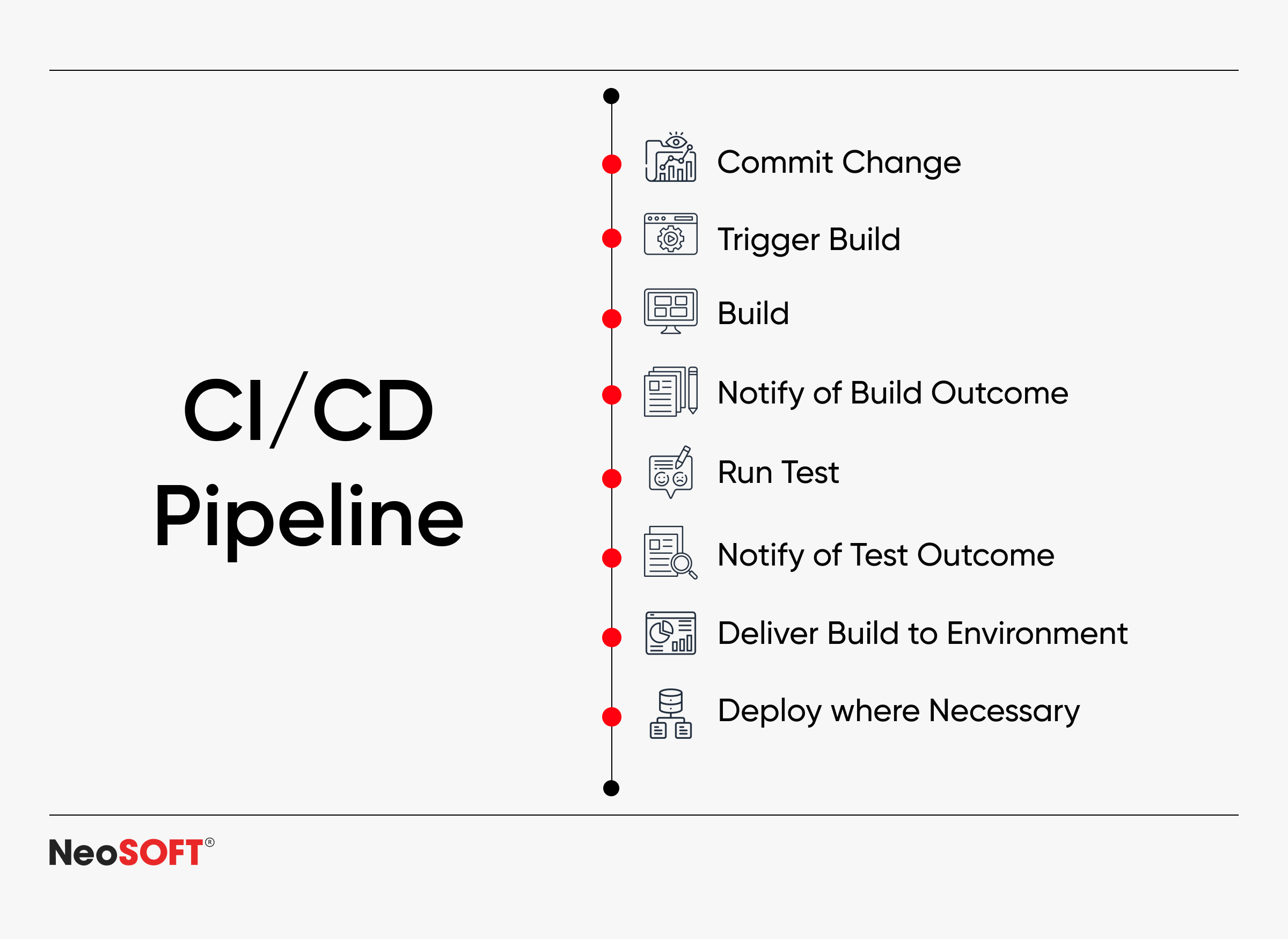
Enhancing Software Testing with AI
Automated testing
Machine learning models can assess the source code using sophisticated algorithms to understand its performance metrics, structure and logic, as well as produce extensive test cases which cover multiple code paths and scenarios. In addition, AI tools and ML systems can evolve and improve with time, learning from the results of previous tests to fine-tune new test generation.
Several applications facilitate test generation via AI-powered automation, some of which include:
- Test.ai leverages AI/ML to automate tasks, like the creation and execution of functional and regression tests, replicating user interactions and finding application faults.
- Functionize utilizes ML to develop, maintain, and run automated tests, which eliminates the need for manual test script writing.
- Applitools employs visual AI tools to automatically build and perform tests based on the application’s visual appearance, ensuring a consistent user interface and better detection of visual issues.
- Mabl integrates AI to generate and conduct tests automatically, delivering insights and finding errors with minimal human oversight.
Improving Test Coverage
Artificial intelligence technologies can improve test coverage significantly by finding sections of the codebase that are under-tested. AI systems can find gaps in the existing automated testing suite and can identify untested code pathways, functions, and classes, giving software testers and developers relevant insights. This evaluation ensures that all components of the program are thoroughly tested, reducing the possibility of undiscovered defects and vulnerabilities.
Enhanced test coverage has various benefits, including:
- Improved software quality: Comprehensive test coverage guarantees that more potential issues are found and addressed prior to release, resulting in higher-quality software.
- Reduced bug risk: Thoroughly testing every area of the software reduces the likelihood of encountering problems in production.
- Rapid issue resolution: With detailed insights into untested sections, developers can more effectively focus their efforts, leading to quicker detection and resolution of issues.
- Increased confidence: Knowing that the good or service has undergone extensive testing provides developers and stakeholders more confidence in its stability and dependability.
- Cost savings: Identifying and resolving issues fairly early in the development process is frequently more affordable versus addressing them after deployment.
- Continuous Improvement: AI-driven insights into test coverage holes allow for continual testing process improvement, adjusting to changes in the codebase and evolving testing requirements.
AI in Monitoring and Incident Management
Anomaly Detection
Machine Learning improves monitoring, security practices and incident management by detecting anomalous patterns in application performance or user behavior that indicate possible problems such as system failures, security breaches, or performance bottlenecks.
ML algorithms evaluate data quality to determine normal behavior patterns and performance indicators, so establishing a baseline. They then examine real-time data for anomalies, such as spikes in response times, unusual error rates, unexpected user activity, or abnormal resource utilization.
For example, ML may detect rapid increases in CPU consumption, memory leaks or slower response times in application performance, as well as unusual login attempts or unexpected transactions in user behavior, all of which indicate possible security issues.
Advanced machine learning algorithms, including those for clustering and classification, distinguish between benign abnormalities and actual threats, minimizing false positives and increasing threat detection accuracy.
Root Cause Analysis
AI models improve root cause analysis (RCA) by rapidly identifying the underlying causes of incidents. Traditional RCA approaches are time-consuming and need substantial manual input, but an AI tool can quickly examine vast volumes of data, identify trends and patterns, and spot weaknesses with high accuracy.
By analyzing data points that include logs, metrics, and user interactions, AI tools discover abnormalities and track them back to their source, speeding up problem resolution and improving code quality.
Several tools use AI models to perform faster and more accurate root cause analysis. Some of them are:
- Moogsoft uses AI and ML to examine alerts and events, comparing them to discover the main causes of incidents and decrease noise, allowing for faster resolution.
- Splunk employs AI-driven analytics to monitor and evaluate machine data, assisting in identifying and addressing the causes of performance issues and security breaches.
- Dynatrace applies AI-driven automation in the discovery and resolution of problems with performance by delivering precise RCA, saving time and effort on manual troubleshooting.
- BigPanda leverages AI tools to accumulate IT alerts from multiple sources, correlate them to find fundamental causes, and streamline issue response processes.
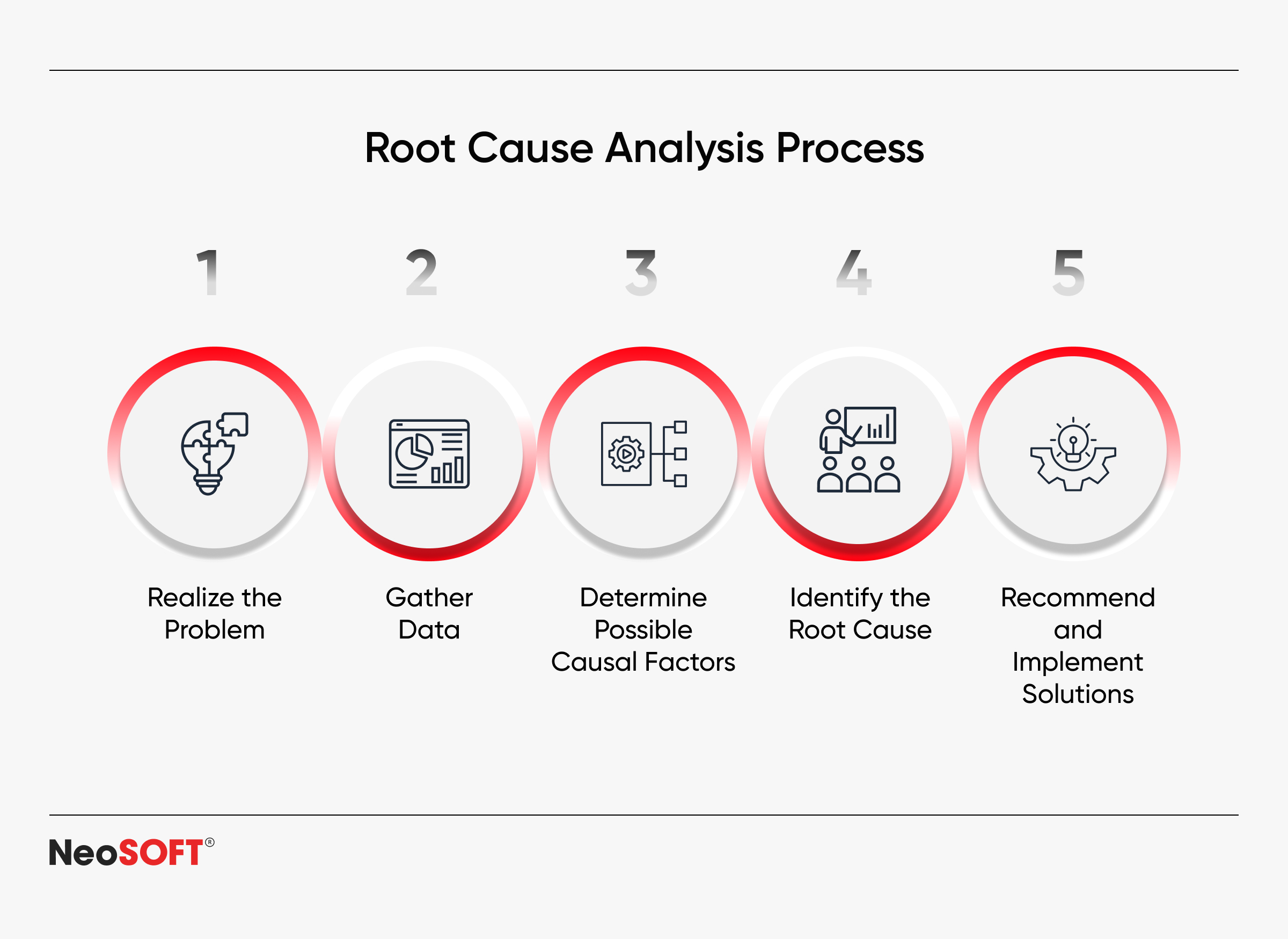
Optimizing Resource Management
Predictive Scaling
Predictive scaling applies AI and ML models for forecasting demand and dynamically scaling resources accordingly. By evaluating past data and identifying patterns of use, ML can anticipate future resource requirements with high precision. This adjustment guarantees that apps function effectively during peak traffic, lowering latency and mitigating bottlenecks, hence improving user experience.
Predictive scaling also enhances cost savings by allocating resources based on actual demand, minimizing overprovisioning and underutilization, resulting in significant savings. Furthermore, it lowers the risk of downtime by scaling resources proactively to match demand spikes, ensuring high availability and dependability.
Improved resource use using ML-driven insights enhances infrastructure and prevents waste. Overall, predictive scaling promotes seamless scalability, enabling organizations to easily optimize resource utilization and allocation to manage growth and shifting demands without requiring manual intervention.
Capacity Planning
Implementing AI tools helps with long-term capacity planning by studying past data and consumption patterns to estimate future resource requirements. AI-powered solutions can estimate demand by analyzing historical data patterns, allowing for more effective infrastructure planning and resource allocation. This proactive method ensures adequate capacity for future demands, avoiding both over- and under-provisioning.
Using AI for capacity planning helps organizations save money on maintaining surplus resources and reduces risks associated with shortages, such as slowdowns or failures during peak times. AI-driven capacity planning provides strategic software and hardware investment decisions, ensuring resources are scaled in accordance with actual demand.
Continuous learning from new data enables AI algorithms to fine-tune predictions, keeping companies agile and responsive to evolving usage patterns and new trends. This intelligent automation guarantees consistent performance, cost effectiveness, and scalability while matching resources with business requirements.
Security Enhancements with AI
Threat Detection
Machine learning models may dramatically improve threat detection by detecting potential security risks and vulnerabilities. ML algorithms sift through large volumes of data, such as network traffic, user behavior, and system logs, to identify unexpected patterns that may suggest malicious activity. By learning what constitutes typical behavior, these systems can swiftly detect variations that indicate possible hazards.
AI and ML-based threat detection can detect previously undiscovered risks by recognizing new patterns of attack, allowing for proactive defense against developing threats. Furthermore, ML minimizes the time required to discover and respond to security incidents, hence limiting potential damage. Continuous learning from fresh data improves the accuracy and efficiency of threat detection over time, ensuring effective protection against changing security issues.
Automated Responses
Implementing AI empowers DevOps teams to automate responses for recognized security incidents, improving an organization’s ability to quickly remediate attacks. AI-driven solutions use algorithms to detect anomalies or breaches and take specified steps, such as isolating affected systems, blocking malicious IP addresses, or launching data backups, all without the need for human participation.
Automated responses shorten the period between threat discovery and repair, lowering possible damage. They also lower the workload of IT security personnel, freeing them to concentrate less on repetitive tasks and more on strategic assignments and data driven decision making.
Several tools enable automated security responses. Some of these include:
- Cortex XSOAR (previously Demisto) is a comprehensive security orchestration, automation, and response (SOAR) platform that integrates with a wide variety of tools to automate incident response.
- Splunk Phantom also provides SOAR technologies for automating repetitive processes and speeding up threat responses.
- MS Azure Sentinel, a cloud-native SIEM platform, automates threat detection and mitigation with AI usage.
- IBM QRadar uses artificial intelligence to automate security data analysis and trigger reactions to suspected threats, decreasing the workload of security teams.
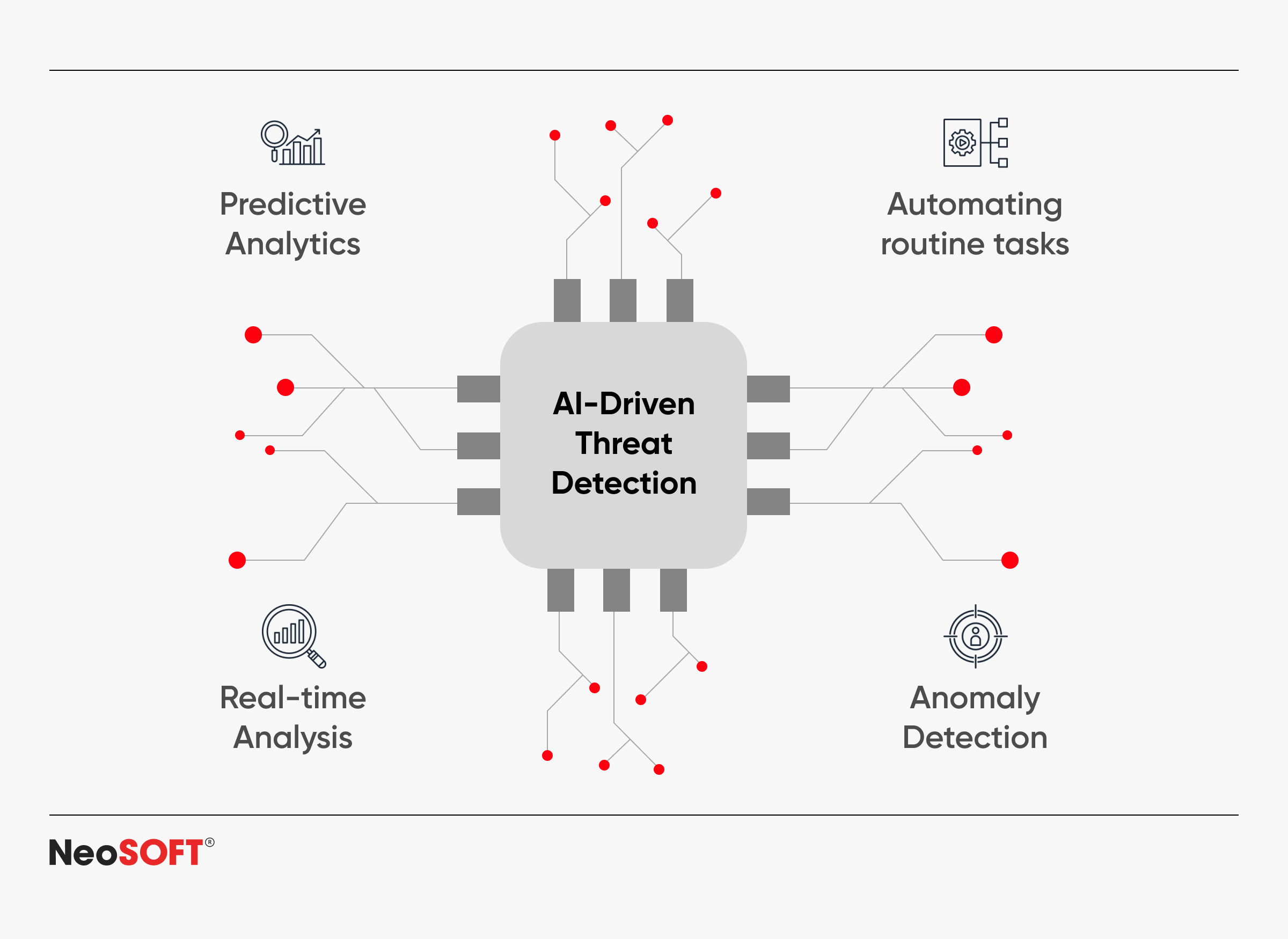
Future Trends for AI in DevOps
AI-driven DevOps pipelines
DevOps is moving towards fully automated pipelines managed by AI. These pipelines can manage the whole software development lifecycle, with little human intervention. Advanced machine learning techniques will also streamline workflows, eliminate errors, and accelerate software releases, leading to efficient high-quality software delivery.
Continuous improvement with AI
ML models can constantly learn and evolve, boosting DevOps teams’ operations. These models produce accurate forecasts and make recommendations based on past data. This frees up developers to work on more pressing aspects of the development process as they implement AI to adapt to changing surroundings, optimize resource allocation, foresee obstacles, and automate routine processes.
Conclusion
AI-driven DevOps approaches improve efficiency, reduce errors, and accelerate software delivery. Embracing these technologies results in more resilient and flexible development processes. Explore the AI/ML and DevOps workflow solutions we provide. Reach out to us at info@neosofttech.com today!






